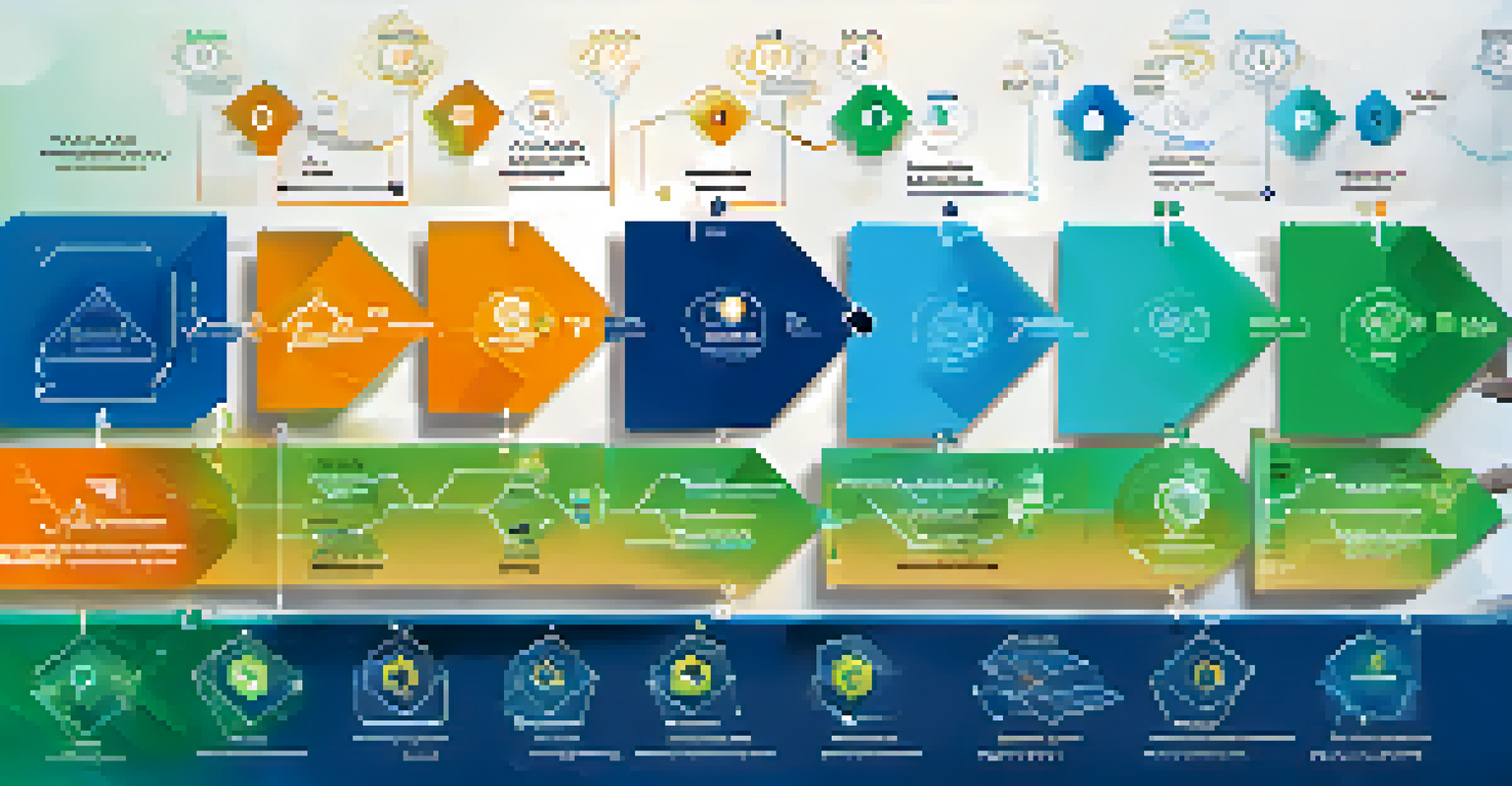Key Challenges in Achieving Blockchain Interoperability

Understanding Blockchain Interoperability and Its Importance
Blockchain interoperability refers to the ability of different blockchain networks to communicate and share data with one another. This is crucial because, as the number of blockchains grows, the need for them to interact seamlessly becomes more apparent. Just like different social media platforms allow users to share content across them, blockchains must be able to share information efficiently to maximize their potential.
In the world of blockchain, interoperability is key to unlocking the full potential of decentralized technologies.
Interoperability enhances the user experience by allowing assets and information to flow freely across platforms, which can lead to greater innovation and efficiency. For instance, imagine a world where digital currencies from different blockchains can be exchanged without the need for complex processes. This would make transactions smoother and more accessible for everyone involved.
Ultimately, achieving blockchain interoperability could revolutionize industries, streamline operations, and facilitate cross-border transactions. However, various challenges stand in the way of this goal, which we will explore in the following sections.
Diverse Protocols and Standards as a Major Hurdle
One of the most significant challenges in achieving interoperability is the existence of diverse protocols and standards across various blockchains. Each blockchain is built using its own unique set of rules and technologies, which can create barriers to communication. Think of it like trying to connect a USB device to a smartphone without the right adapter; if the protocols don't match, the connection simply won't work.

This diversity can lead to fragmentation, where certain blockchains operate in isolation rather than as part of a cohesive network. As a result, users may find themselves unable to transfer assets or data between platforms, leading to inefficiencies and a lack of integration. Just as a multilingual society requires a common language for effective communication, blockchains need standardized protocols to interact meaningfully.
Interoperability Enhances Efficiency
Blockchain interoperability allows seamless communication between different networks, improving user experience and fostering innovation.
Efforts are being made to develop universal standards, but until a consensus is reached, the challenge remains. This ongoing fragmentation can slow down the broader adoption of blockchain technology, which is counterproductive to its intended purpose of decentralization.
Security Concerns in Interconnecting Blockchains
Security is another critical challenge when it comes to blockchain interoperability. Connecting multiple networks can create vulnerabilities that malicious actors might exploit, much like leaving multiple doors unlocked in a house makes it easier for intruders to enter. Each blockchain has its own security measures, and ensuring that these measures work effectively together is no small feat.
The future of blockchain is not about competing networks, but about creating an ecosystem where they can work together.
When blockchains interoperate, they share sensitive data, which can lead to potential breaches if not managed properly. For example, a vulnerability in one blockchain could compromise the integrity of another, putting user assets at risk. This interdependence requires robust security protocols that can handle the complexities of cross-chain communication.
As the technology evolves, so too must the security measures that protect these interconnected systems. Striking the right balance between usability and security is essential for fostering trust and encouraging wider adoption.
Scalability Issues Affecting Interoperability Efforts
Scalability is a significant challenge in the quest for blockchain interoperability. Many existing blockchains struggle to handle a high volume of transactions simultaneously, which can lead to slow processing times and increased costs. Imagine trying to send a message through a crowded network; the more users there are, the longer it takes for your message to get through.
When different blockchains try to interact, their individual scalability issues can compound, leading to bottlenecks that impede efficient communication. This is particularly problematic for decentralized applications that rely on multiple blockchains for their functionality. If one blockchain is slow, it can affect the entire network's performance.
Security is a Major Concern
Connecting multiple blockchains increases vulnerabilities, necessitating robust security measures to protect sensitive data.
To overcome these challenges, solutions like layer 2 scaling and cross-chain bridges are being explored. However, these solutions must be carefully designed to ensure they don't introduce new issues while alleviating existing ones.
Regulatory Challenges Impacting Blockchain Interoperability
Regulatory uncertainty presents a complex challenge in achieving blockchain interoperability. Different jurisdictions have varying laws and regulations governing blockchain technology, which can create confusion and hinder collaboration. For instance, if one country allows certain blockchain activities while another imposes strict regulations, it can lead to a fragmented ecosystem that complicates interoperability.
Compliance with these regulations often requires significant resources and expertise, which might not be feasible for smaller blockchain projects. As a result, many startups may hesitate to pursue interoperability, fearing legal repercussions or excessive costs. This is akin to navigating a maze; the more twists and turns you encounter, the harder it is to find your way out.
To foster a more conducive environment for interoperability, it is essential for regulators to establish clear guidelines that promote innovation while ensuring user protection. Creating a harmonized regulatory framework could pave the way for greater collaboration and integration across blockchains.
User Adoption and Education as Key Factors
User adoption plays a crucial role in the success of blockchain interoperability initiatives. For interoperability to be effective, users must be willing to embrace new technologies and understand how they work. This requires a significant investment in education and awareness-raising efforts, which can often be overlooked in the rush to develop new solutions.
Without proper education, users may be hesitant to engage with interoperable systems, fearing that they won't understand how to use them effectively. Think of it like trying to use a smartphone without any prior experience; it can be intimidating and frustrating. Therefore, fostering user confidence through accessible resources and training is essential.
Regulatory Clarity is Essential
Harmonized regulations across jurisdictions are crucial to facilitate collaboration and promote the adoption of interoperable blockchain systems.
By prioritizing education and user-friendly interfaces, blockchain projects can encourage wider adoption and make interoperability a reality. The more comfortable users feel navigating these systems, the more likely they are to explore their potential benefits.
The Future of Blockchain Interoperability: Opportunities Ahead
Despite the challenges discussed, the future of blockchain interoperability is bright and full of opportunities. As awareness grows and more stakeholders recognize the benefits of interconnected blockchains, collaboration is likely to increase. This could lead to innovative solutions that address existing challenges and pave the way for a more integrated blockchain ecosystem.
Moreover, advancements in technology, such as decentralized finance (DeFi) and non-fungible tokens (NFTs), are driving interest in interoperability. These emerging trends create a fertile ground for new projects focused on connecting blockchains and enhancing user experiences. The excitement surrounding these developments can inspire others to join the journey toward greater interoperability.

Ultimately, the path to achieving blockchain interoperability may be fraught with challenges, but the potential rewards make it a worthy pursuit. By working together and leveraging collective expertise, the blockchain community can overcome obstacles and unlock the full potential of this transformative technology.